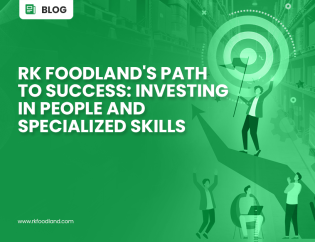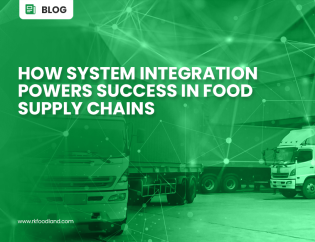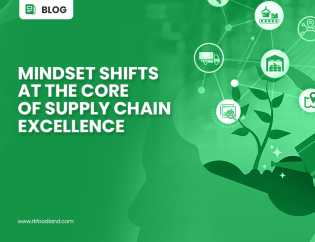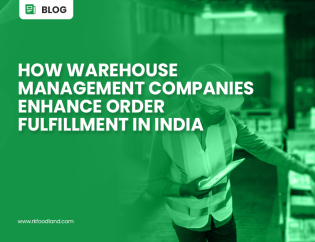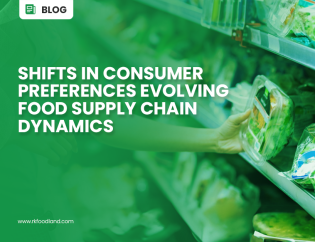
While traditional supply chain inventories and services are provided based on forecasted demand and historical sales patterns; in a demand-driven supply chain, the companies that comprise the supply chain collaborate to shape market demand by sharing and collaborating information, thereby avoiding time lags in information flow and avoiding the bullwhip effect across the supply chain.
A demand-driven supply chain is one that is focused on the demand generated by consumer data and feeds this data to the supply base, hence increasing inventory availability through a demand-pull strategy. The DDSC planning process is driven by customer needs. It implements a tactic known as ‘demand-pull.’ This helps the market to work more effectively with other supply chain players by sharing new information.
Below are five key anchors to a demand-driven supply chain:
Anchor 1: Evolving Consumer Demand in India
Today’s customer environment is more dynamic than ever before. Technology innovations driving substantial shifts in customer behavior challenge organizations across the food service industry. The supply chain of yesterday was linear, sequential, and static. It is now dynamic, multi-directional, and evolving. To achieve their goals, supply chain leaders must make decisions quickly enough to keep up with the market. In this continuously changing market, planning teams need to refocus their efforts on the unique demands of individual customers.
Food trends are influencing traditional Indian cuisines. To appeal to health-conscious consumers, food manufacturers have altered their menus to include healthful options. Some restaurants now serve nutritious meals, plant-based meat, and organic food. Internet and smartphone usage will raise the demand for specialized foods. Web-based ordering and the usage of AI and IoT in order are altering the market. These advancements have revolutionized home delivery by bringing food to the consumer’s door faster. According to Research and Markets, the Indian online food delivery industry is expected to reach US$ 21.41 billion by 2026, up from US$ 4.66 billion in 2020. This changing landscape, along with forthcoming trends and India’s growth trajectory, is propelling the foodservices business forward. This growth rate is projected to continue, driven by consumers and foodservices businesses. By being able to quickly identify shifting consumer sentiments and how demand might respond, food brands can increase profitability, lead time, and margins. So, in this continuously changing industry, professionals can refocus their efforts on the unique demands of individual customers in order to scale across the country.
Anchor 2: Decision-Driven Integrated Planning
To compete in a rising market and maintain business processes, companies must connect their supply chain planning in an integrated manner from start to finish. Traditionally, organizations have relied solely on past data, limiting their ability to adapt to future disturbances. Finally, food manufacturers can manage their supply chains holistically, with real-time insight across the network. Integrated planning enables a dynamic, collaborative S&OP process to sense and drive demand. By utilizing the rolling forecasts feature within the value chain, food brands can predict demand two months in advance and can accordingly prepare and plan for it. Anticipating consumer desires, when they desire it, and where they desire it can be difficult for many firms. Gaining end-to-end visibility across the supply chain enables food brands to detect customer demand signals. To aid demand planners in planning more quickly, accurately, and precisely, predictive planning based on statistical functions might be beneficial. This is accomplished by analyzing historical data and forecasting future demand, providing the planner with a variety of statistical methodologies from which to pick.
Anchor 3: Supplier Relationship Management
More complex supply chains necessitate precise, measurable techniques to evaluate each provider. Supplier Relationship Management (SRM) helps determine how suppliers contribute to or detract from a company. SRM aims to increase efficiencies and value for all stakeholders. It identifies essential suppliers and lays the groundwork for buyer-supplier engagement. Finding suppliers who share the same goals as food brands might result in improved overall efficiency. Suppliers will better grasp business requirements with open and effective communication. This knowledge helps avoid supply chain delays and makes debugging difficulties easier. SRM aims to increase a company’s value and profitability. SRM can improve supply chain performance, reduce wholesale prices, and increase efficiencies. It can also assist reduce risk, improving administrative and onboarding efficiency. To compete in the marketplace, the entire supply chain operations process needs to focus on improvements that needs be measured by key performance indicators like SIFOT. Supplier in full and on time – SIFOT is fundamental in running a supply chain effectively. It allows food brands to gauge the performance of a supplier by understanding what percentage of their supplier deliveries are being delivered in full.
Anchor 4: Enhanced Supply Chain Execution
Supply chain execution is the daily implementation of the supply chain plan. It comprises managing inventory levels, taking orders, planning and executing work orders, picking and packing orders, and scheduling shipments. Execution may also include revising the strategy to address changing demand or a supply chain challenges. Efficient supply chain execution ensures order fulfilment and increases customer satisfaction. It also helps businesses gain a competitive advantage by attracting new customers and increasing revenue. Complexity increases when it comes to food brands and their challenges. A production strategy is developed in conjunction with supply chain execution but supply chain professionals must act quickly. To pull it off in a timely manner for order fulfilment, companies need to employ technology like warehouse management, transportation management, planning and forecasting, supplier management, order management, and more to help them make better decisions.
Anchor 5: Supply Chain Visibility
Supply and demand changes require companies to obtain visibility into this complicated network of customers, suppliers, and logistics providers. Enhanced supply chain visibility is critical in a demand-driven supply chain. Companies require visibility from the supplier dock to the customer door to know what is going on and where orders are. After placing the initial or replacement food orders, the customer can receive confirmation from carriers, appointment times, and actual delivery timeframes. Visibility comprises sensing data, evaluating it, and acting across the organization. A supply chain business network fosters internal and external collaboration and transparency. Gaining this knowledge improves order fulfillment rates and customer service while increasing revenue. Customer satisfaction and profitability are impacted by supply chain visibility issues. Even basic supply chains include multiple partners and phases that may use better knowledge. It is a necessary component of larger, more sophisticated supply networks. With end-to-end supply chain integration, businesses are able to access various kinds of data from their supply chain. This data covers the entire supply chain from raw materials and suppliers to completed goods and customers. To improve productivity and customer happiness, the company must improve visibility and automate. In addition, this level of visibility allows for continuous monitoring of the supply chain from suppliers to customers and logistics.
Struggling with your supply chain’s performance? Talk to us today and let us help you achieve its complete potential
